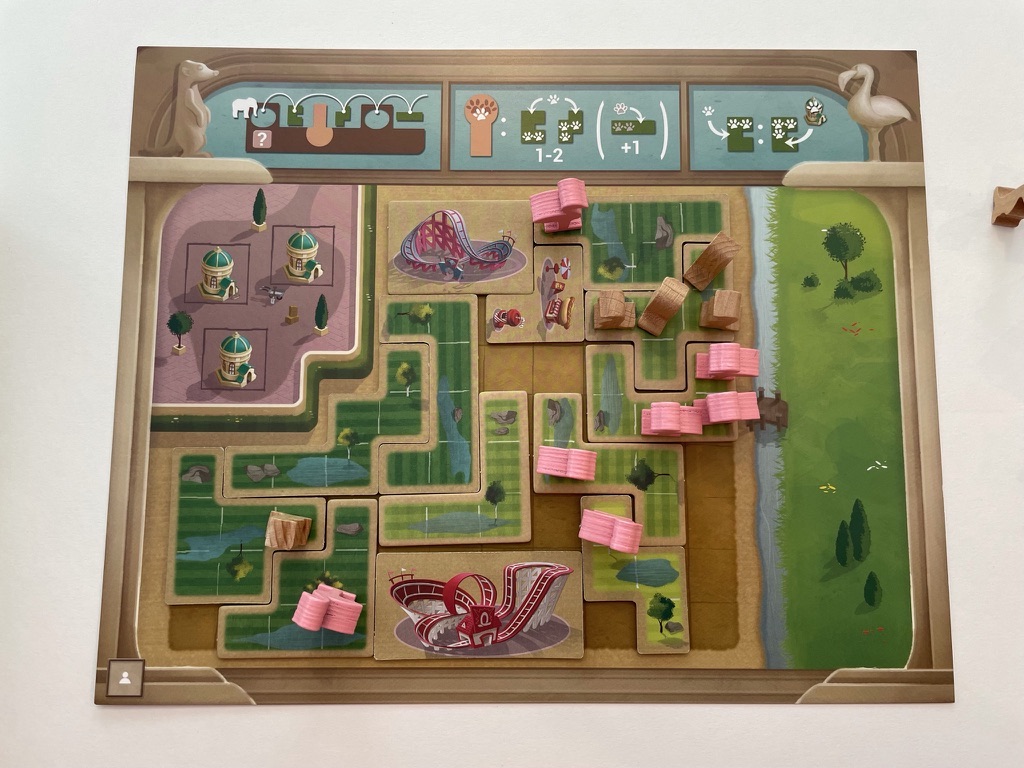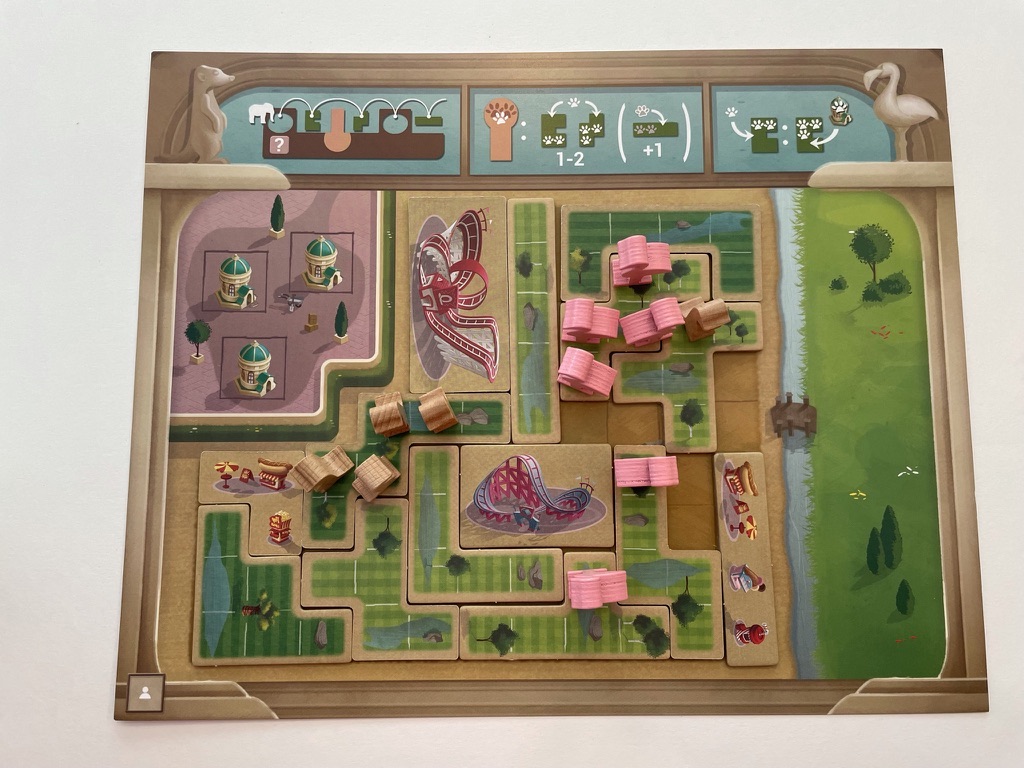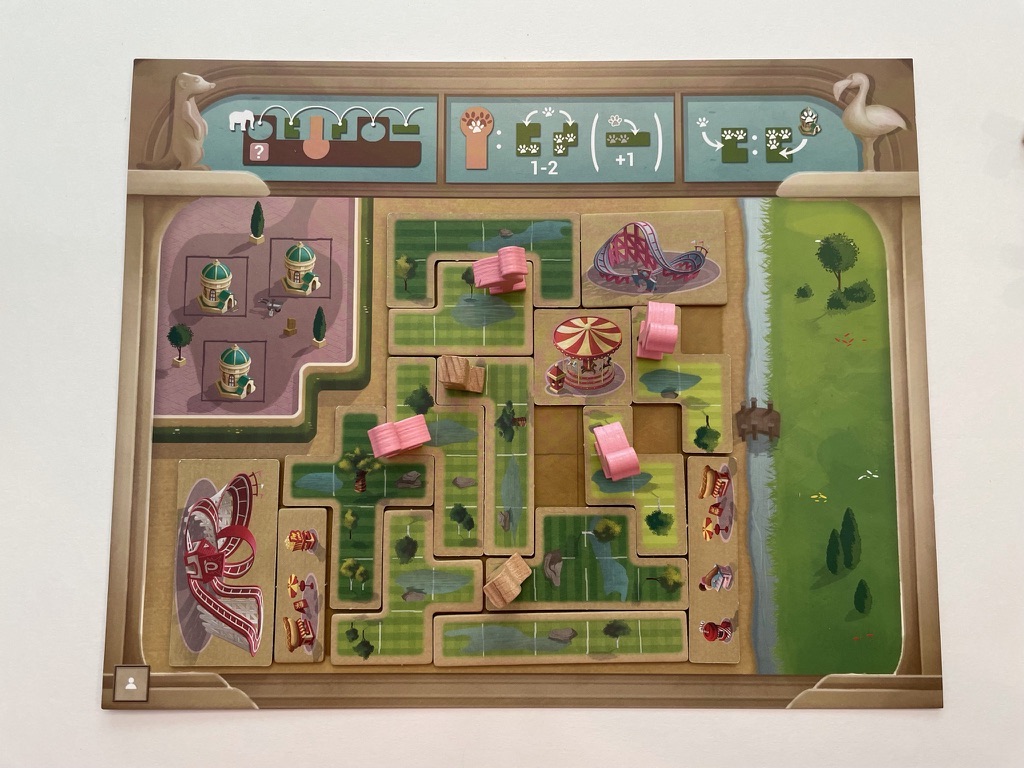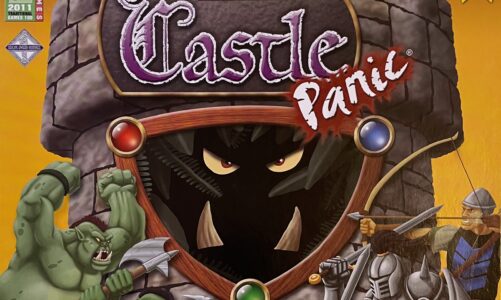I could not wait to tear the cellophane off of New York Zoo when it arrived at our house a couple weeks ago. I had some big expectations for this board game, which grew as the months of waiting for it passed by. In this review we take a look at a lovely game by Uwe Rosenburg with art by Felix Wermke. Did this board game live up to the hype? Short story, absolutely! If you want to know more, please read on!
What’s New York Zoo all about?
In New York Zoo, players battle to become the first to complete their own zoo. This is done by adding polyomino tiles that each represent an animal enclosure to your individual player board. Along the way you get to add animals to your enclosures. More than 2 animals in an enclosure? It’s your lucky day because you’ll get to breed those animals when any player passes the corresponding breeding spots on the movement track. More animals will get you more animal enclosures and an opportunity to add amusement items to your board. Amusement items take up space on your player board, thus providing a quicker path to victory!
Seriously, I just love polyomino-tile-laying games, and this is no exception! It’s just so satisfying to see your Tetris field turn into a victorious zoo. According to the rules, the polyomino tiles do not have to be touching when they are placed into your zoo. I personally find it difficult to place the tiles if they aren’t touching. Anyone else out there have this problem?
Components
New York Zoo comes with a pile of cute little zoo meeples. Zeeples, maybe? They’re glossy and well crafted. We’ve had no problem getting our zeeples (I’m going with it) to stand on the boards, and they seem pretty sturdy once placed. The movement track is made from a thick cardboard that lays nicely on the table. The individual player boards are made out of a sturdy paper that has a plastic-like finish to it. This is the only component in the game that concerns me in terms of durability. These things could easily get bent up, and I think a couple of the corners on our boards are already a little dinged.
Learning Curve
One of the things I’ve enjoyed most about New York Zoo is how quick it’s been to learn the rules and teach them to others. The rulebook is exceptional, and Capstone has a video tutorial that’s useful as well. The very first time I set this game up, I had a hard time figuring out where to place the different color polyomino on the movement track. There’s only a slight color variation between the 4 shades of green, and I really struggled to figure out which was supposed to be which. Thankfully, the incredible rulebook has diagrams that very clearly show you how to stack the different colors along the track. Honestly, once I completed setup a few times, it became very clear where all the pieces were supposed to go.
Speedy New York Zoo
If by chance you feel the game is too long at 2 players, there is an abridged version, and it’s awesome. While the standard game is great for most occasions, if you’re in a time-crunch, or just looking for a quick filler to warmup for a heavier game, this short game is perfect. Once the game is setup, simply remove the top layer of animal enclosures located around the movement track. This top layer is randomly divided up so that both players start the game with 6 animal enclosures. Game play then continues like normal.
Solo Mode
New York Zoo does include a solo mode. The gameplay is very similar to the base game, with just a few notable exceptions.
- You only have 2 laps around the track to “win” a solo game. Once your elephant returns to its red starting dot for the second time, scoring begins.
- New York Zoo uses a “beat your best score” objective for the solo mode.
- The elephant’s movement along the track is determined by square tiles that are numbered 0 through 4+. Each tile must be used (and flipped over) before all tiles can be reset and used again.
- You really need to plan your movement carefully. It’s super frustrating when the polyomino you need is 2 steps away, but you only have a “3” movement tile left to use. You’ll have to skip over it and hope you’re able to grab it on your second lap.
- Use that “0” movement tile when it matters most and you will be rewarded!
General thoughts on solo mode
The beat your best score to win mechanic is not everyone’s favorite. For me personally, I’m perfectly happy to challenge myself so this didn’t deter how I feel about the solo mode. Overall, I really enjoyed it. It’s super quick to setup and play. Each game takes roughly 20 minutes.
Final scoring is very easy. Bottom line: It’s minus 1 point for each empty spot in your zoo. There is a way to score positive points, but I haven’t achieved this feat yet. In order to get +1 point, every spot in your zoo must be filled before you reach the elephant’s starting point the second time. If you fill your board and land on the starting point in the same turn, it’s simply 0 points. Here’s a peak at the final scoring for 3 of my solo attempts. I improved the more I played, but never scored better than -4!
Will solo mode in New York Zoo still be interesting if I ever hit the +1 final score? Time will tell!
Conclusion
So far, we’ve really enjoyed our time with New York Zoo. It’s a fun, relaxing game that’s perfect for a casual game night when you’re looking for something easy, but also interesting to play. This would also be a great game to teach someone who might be newer to the board game hobby!
The only negative I had after our first play through was that the game seemed a touch long. Not that I wasn’t enjoying it, but it just seemed like a big board to fill up. In subsequent play throughs, this has not been a problem. Most likely, that first game just felt longer because we were still trying to learn the rules. The speedy variant eliminates this problem, regardless!
Our kids are drawn to the game simply because it’s cute. Neither of them have played Tetris, so the allure of the polyomino tiles isn’t quite the same for them as it is for us adults. In fact, if you’re thinking about playing this board game with younger kids, I suggest giving them a pile of the polyomino tiles to play around with before playing an actual game. We also played teams with our kids in order to help guide them as they learned the rules!
Check out the tutorial from Capstone for more specifics about how to play!







